Abstract
Although behavior analysis has been criticized for failure to account for response novelty, many common behavior-analytic concepts and processes (e.g., selectionism, the operant, reinforcement, and stimulus control) assume variability both in the environment and in behavior. The importance of the relation between variability and novelty, particularly for verbal behavior, is discussed, and concepts used to account for novel behavior are examined. Experimental findings also are reviewed that suggest that variability in behavior can come under discriminative control, and these findings are applied to describe novel instances of behavior that may arise during problem solving. We conclude that variations provided and selected by the terms of the three-term contingency are powerful means for understanding novel behavior.
Keywords: novelty, stimulus control, variability, the operant, verbal behavior, problem solving, creativity
Full text
PDF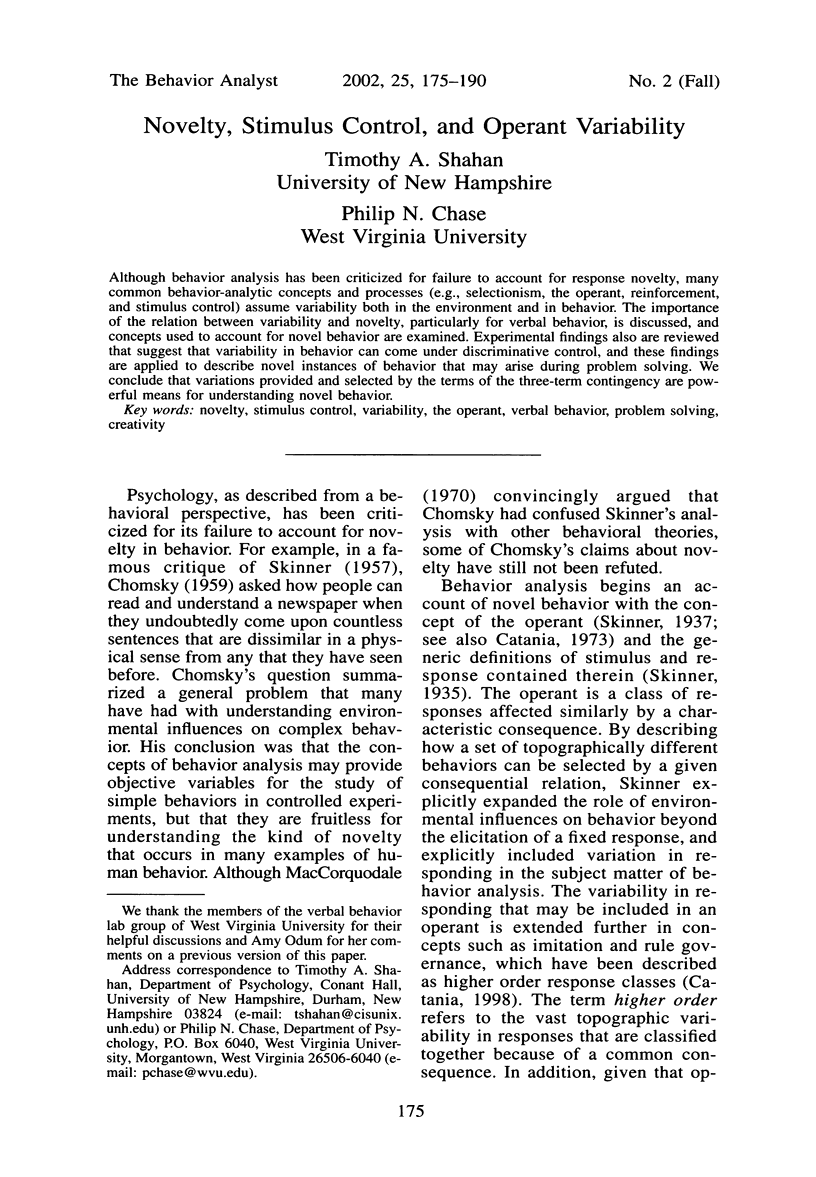
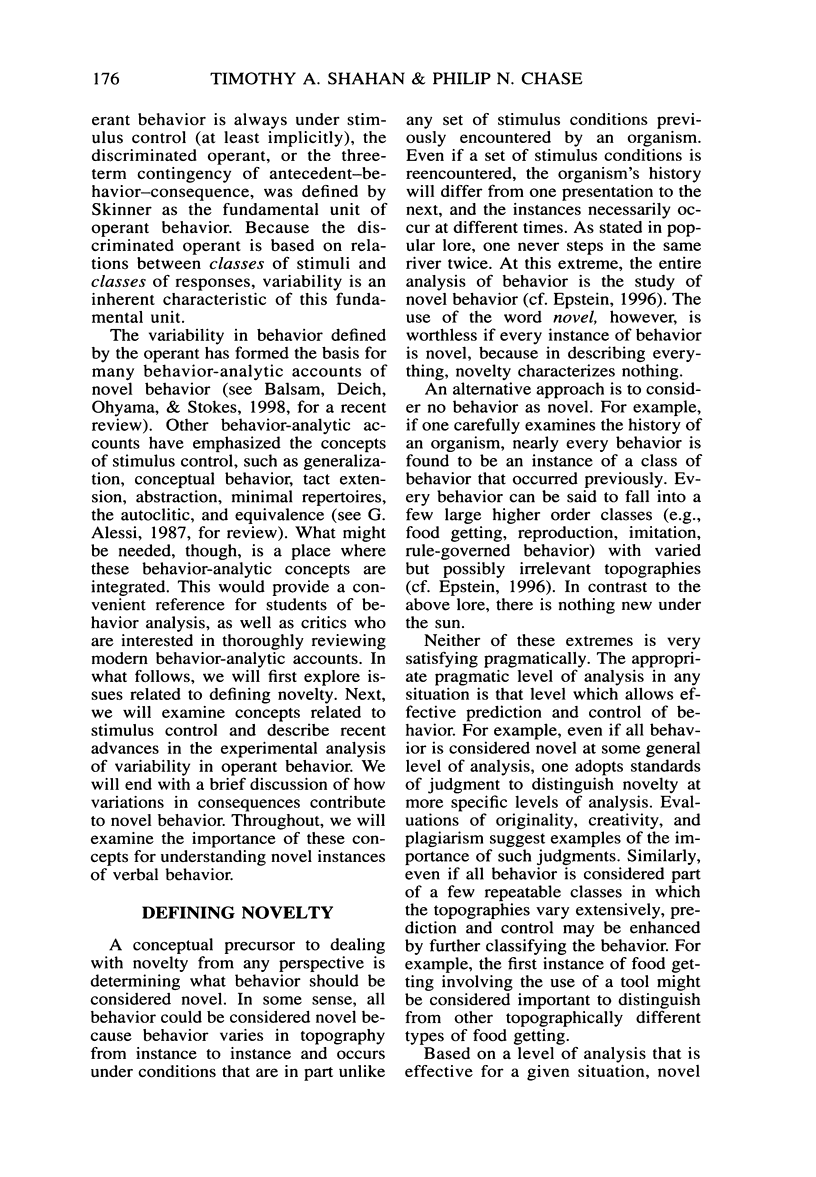
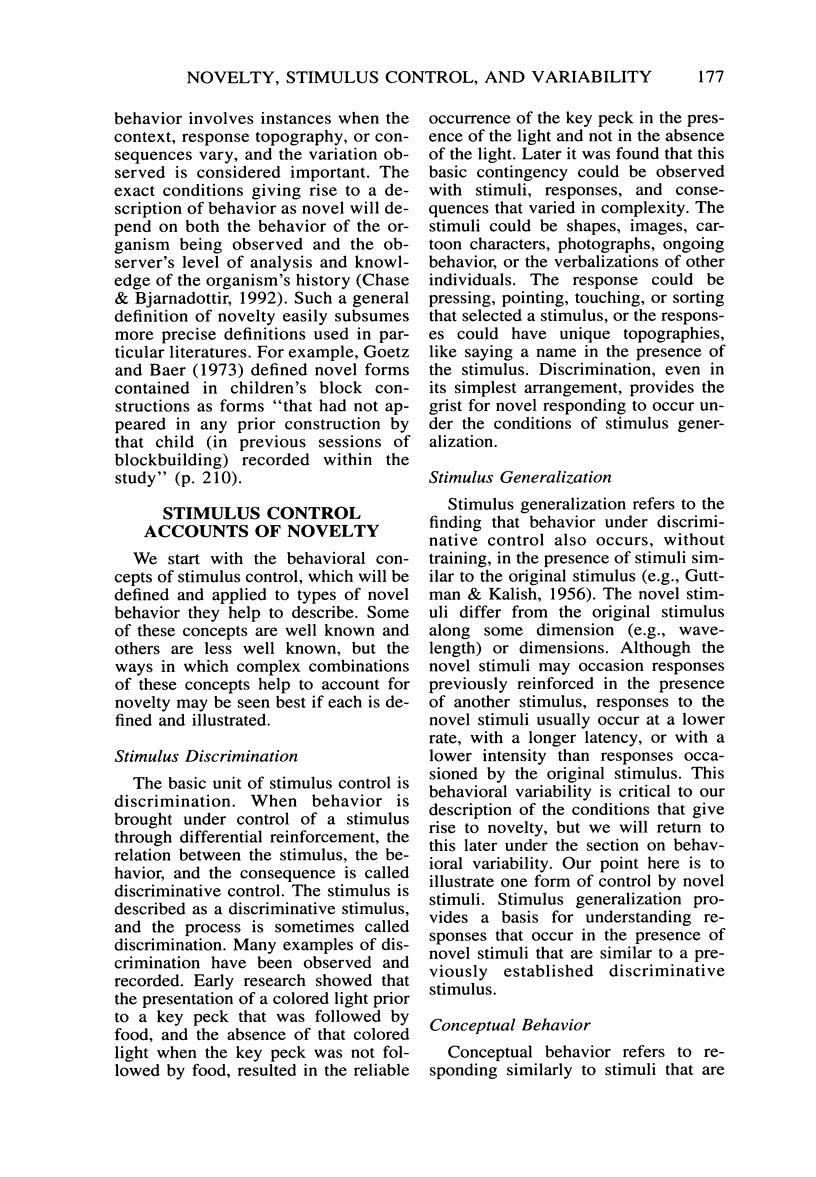
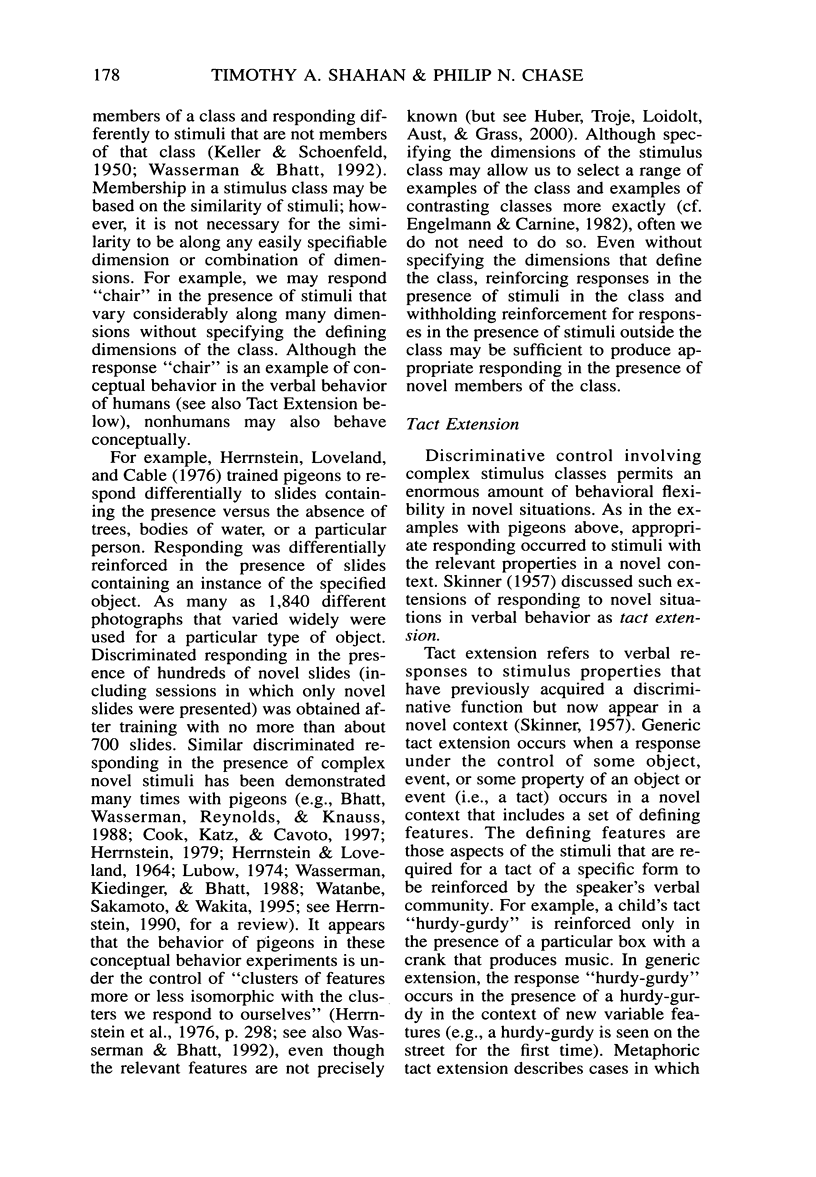


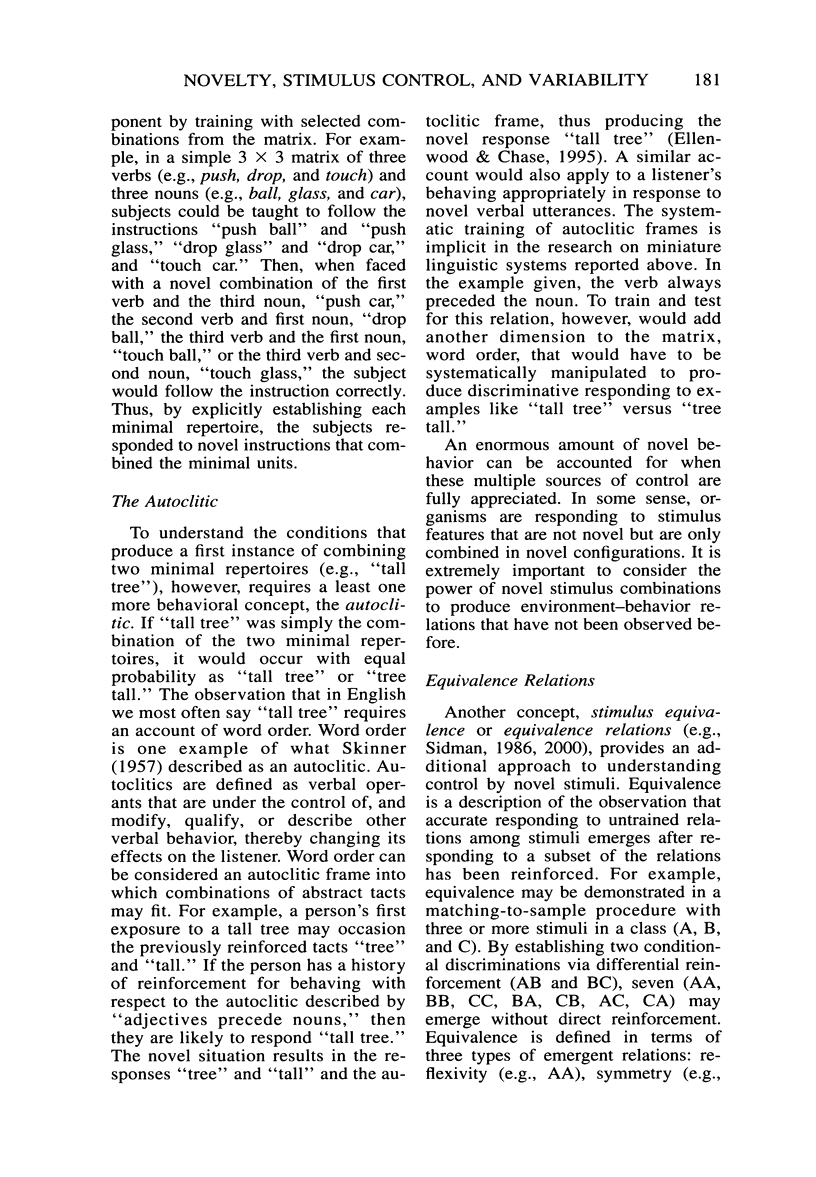
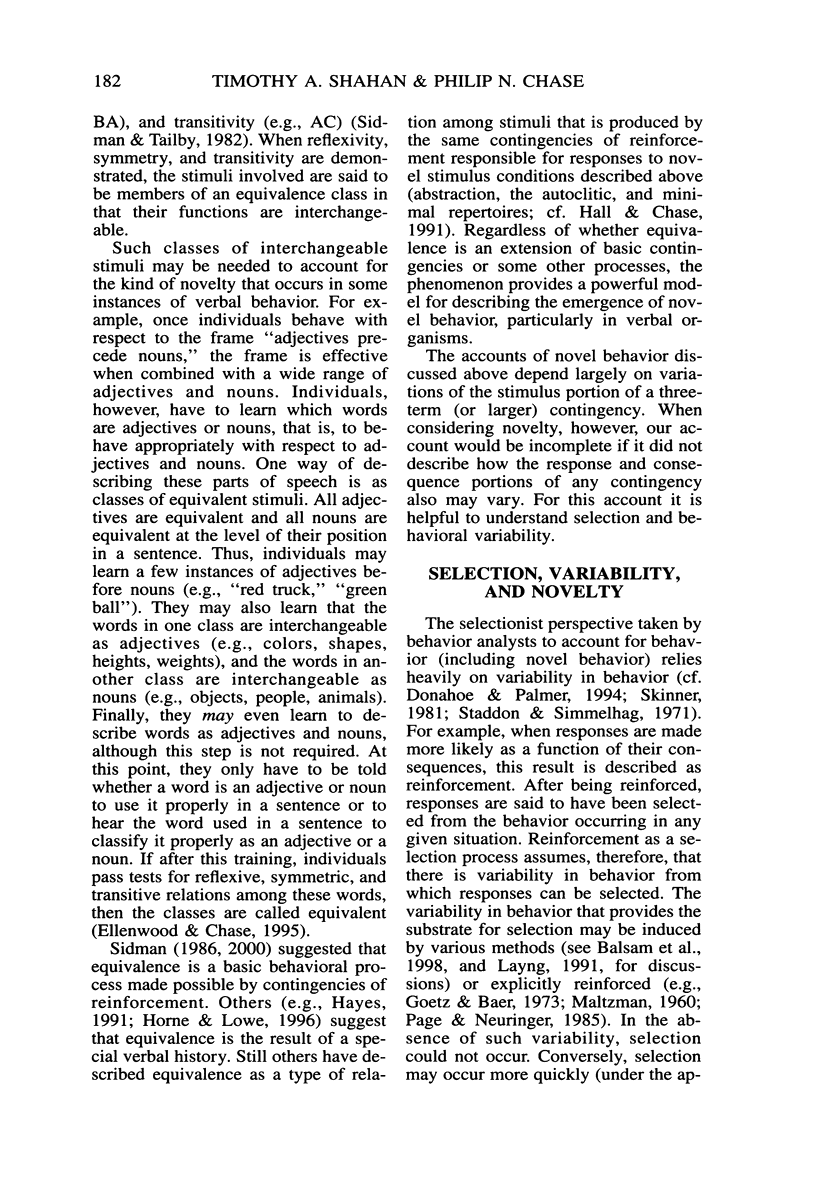
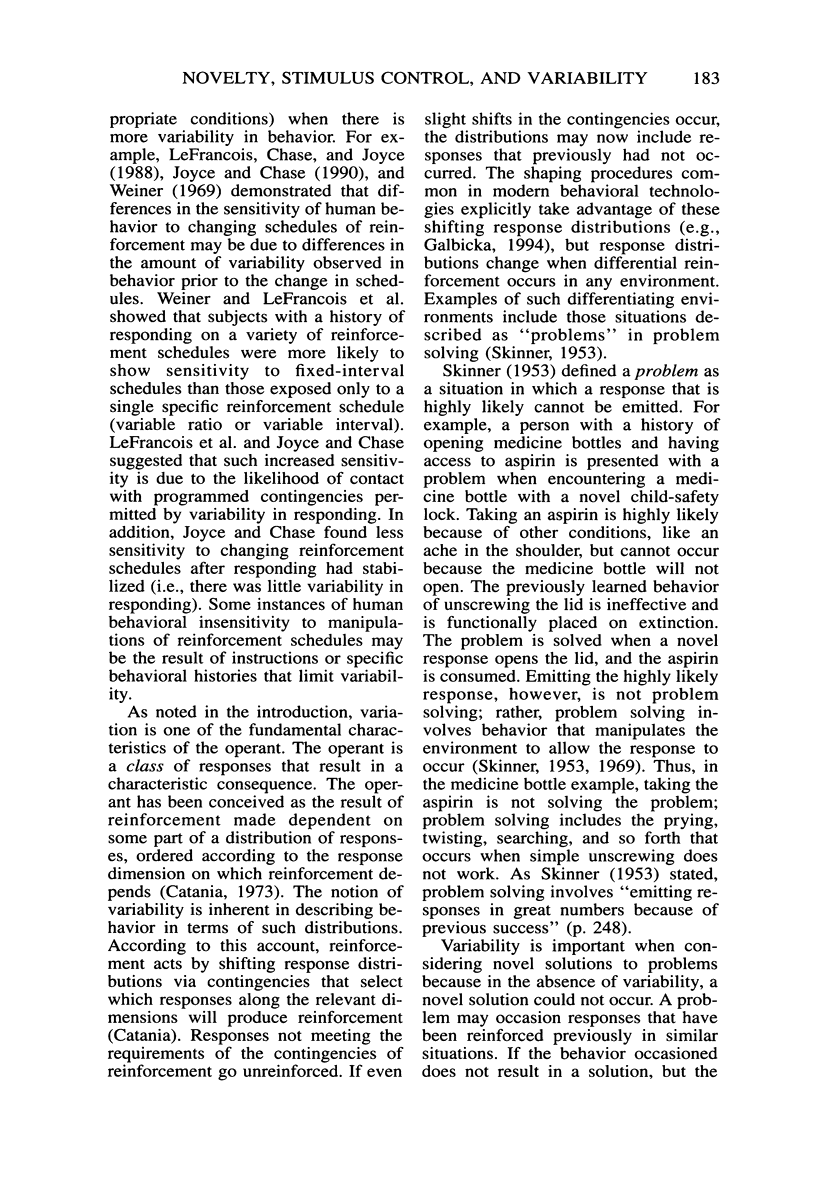
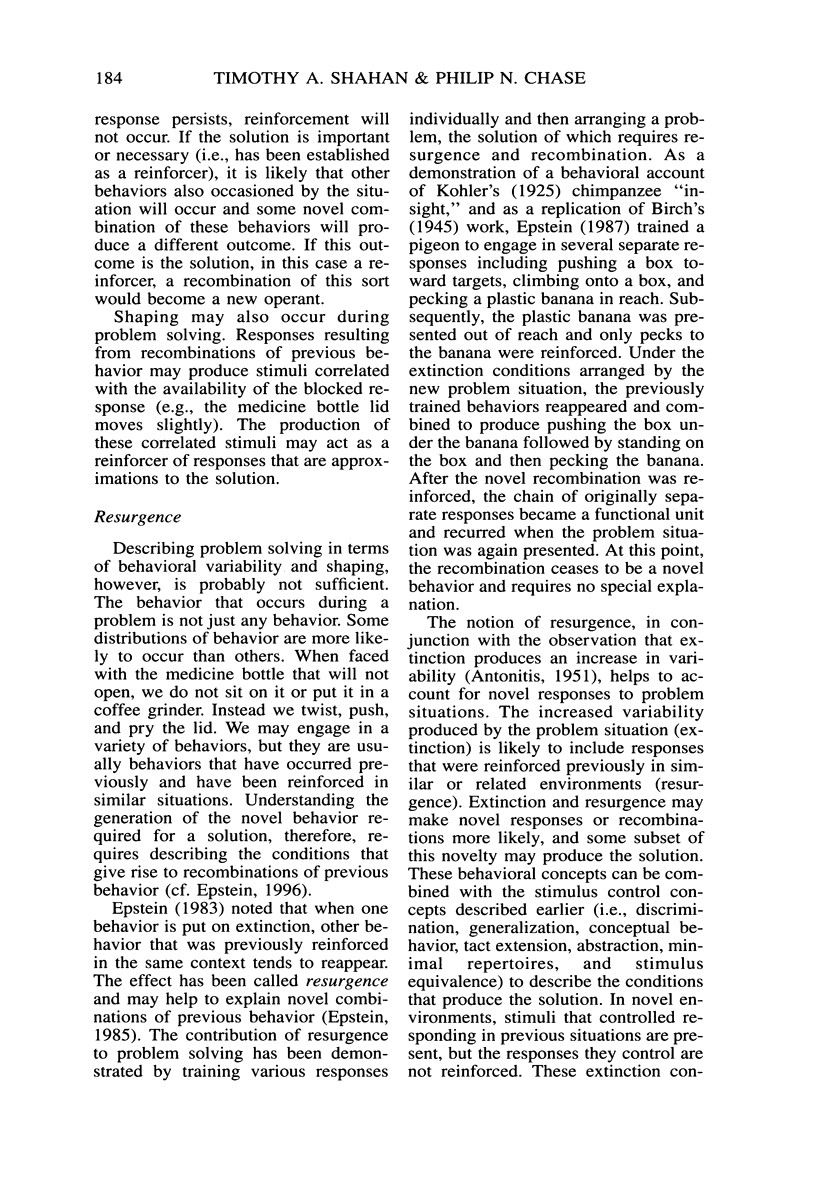
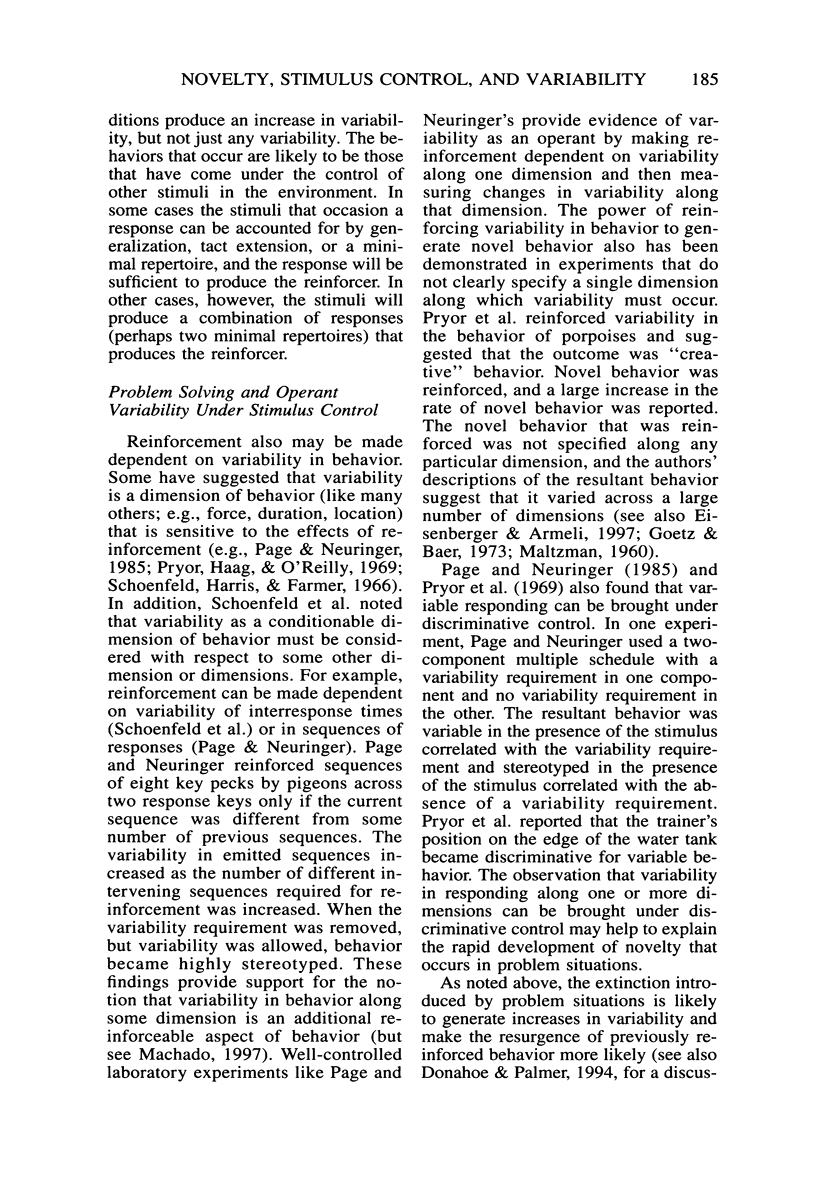
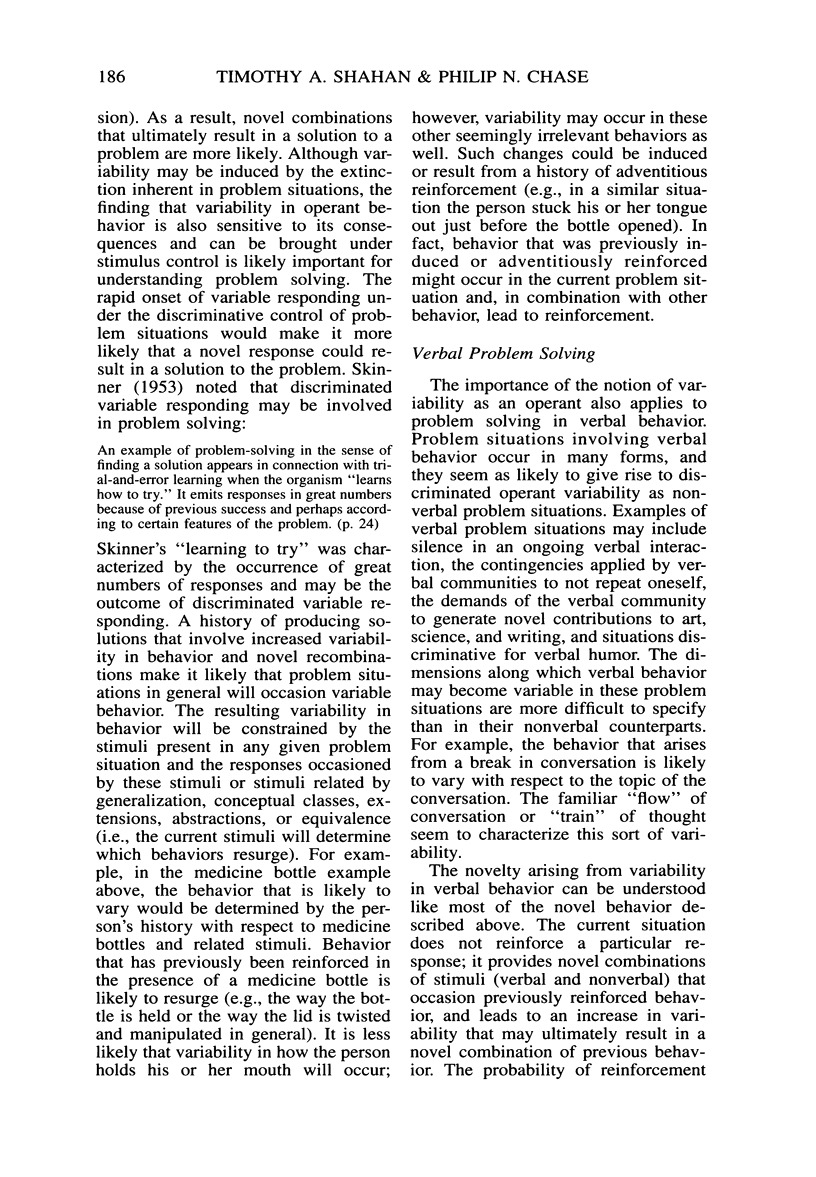


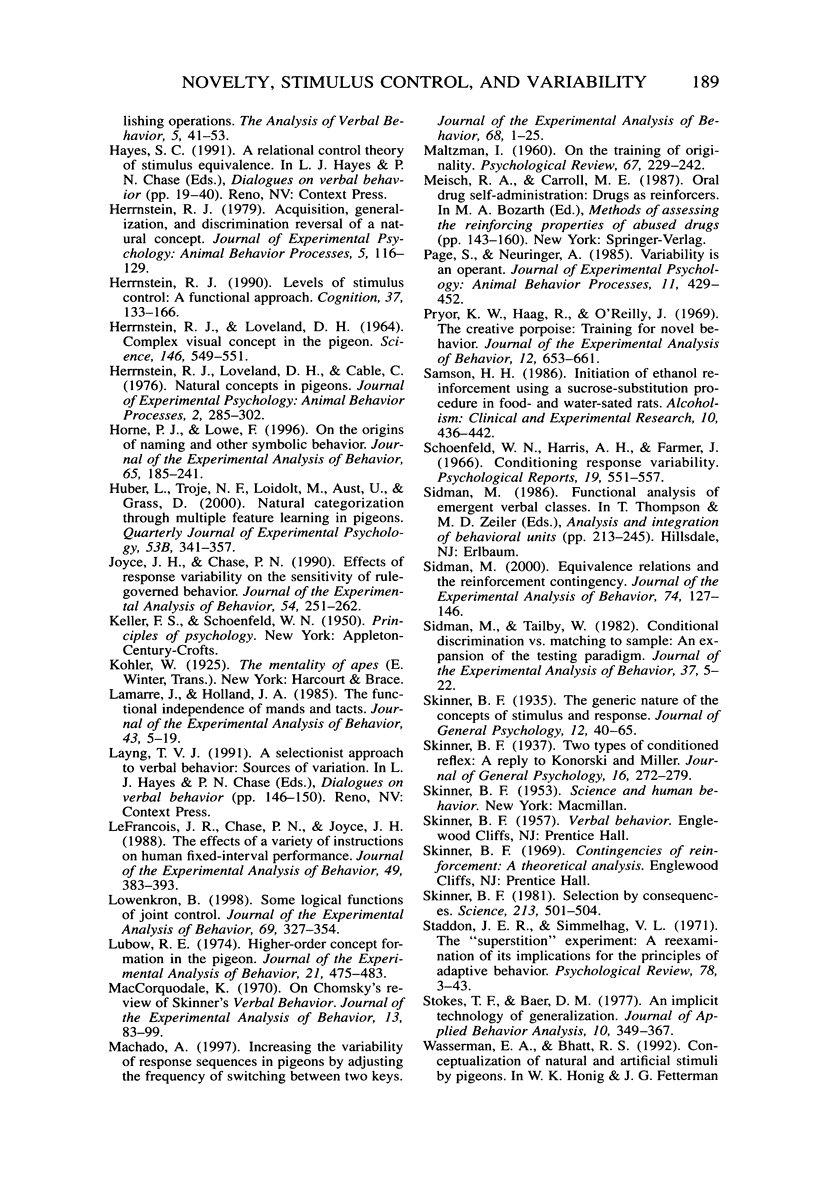
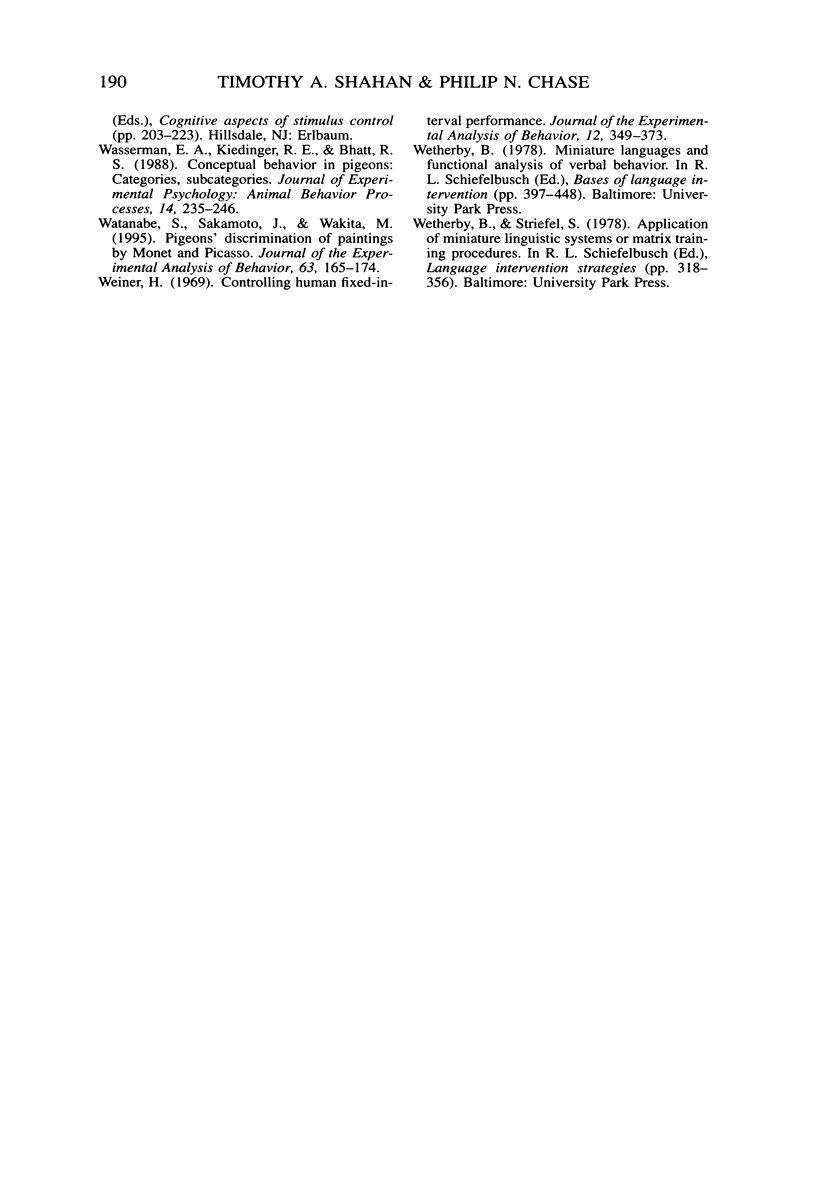
Selected References
These references are in PubMed. This may not be the complete list of references from this article.
- ANTONITIS J. J. Response variability in the white rat during conditioning, extinction, and reconditioning. J Exp Psychol. 1951 Oct;42(4):273–281. doi: 10.1037/h0060407. [DOI] [PubMed] [Google Scholar]
- Alessi Sheila M., Roll John M., Reilly Mark P., Johanson Chris-Ellyn. Establishment of a diazepam preference in human volunteers following a differential-conditioning history of placebo versus diazepam choice. Exp Clin Psychopharmacol. 2002 May;10(2):77–103. [PubMed] [Google Scholar]
- Chase P. N., Johnson K. R., Sulzer-Azaroff B. Verbal relations within instruction: Are there subclasses of the intraverbal? J Exp Anal Behav. 1985 May;43(3):301–313. doi: 10.1901/jeab.1985.43-301. [DOI] [PMC free article] [PubMed] [Google Scholar]
- Cook R. G., Katz J. S., Cavoto B. R. Pigeon same-different concept learning with multiple stimulus classes. J Exp Psychol Anim Behav Process. 1997 Oct;23(4):417–433. doi: 10.1037//0097-7403.23.4.417. [DOI] [PubMed] [Google Scholar]
- Eisenberger R., Armeli S. Can salient reward increase creative performance without reducing intrinsic creative interest? J Pers Soc Psychol. 1997 Mar;72(3):652–663. doi: 10.1037//0022-3514.72.3.652. [DOI] [PubMed] [Google Scholar]
- Epstein R. The spontaneous interconnection of four repertoires of behavior in a pigeon (Columba livia). J Comp Psychol. 1987 Jun;101(2):197–201. [PubMed] [Google Scholar]
- GUTTMAN N., KALISH H. I. Discriminability and stimulus generalization. J Exp Psychol. 1956 Jan;51(1):79–88. doi: 10.1037/h0046219. [DOI] [PubMed] [Google Scholar]
- Galbicka G. Shaping in the 21st century: Moving percentile schedules into applied settings. J Appl Behav Anal. 1994 Winter;27(4):739–760. doi: 10.1901/jaba.1994.27-739. [DOI] [PMC free article] [PubMed] [Google Scholar]
- Goetz E. M., Baer D. M. Social control of form diversity and the emergence of new forms in children's blockbuilding. J Appl Behav Anal. 1973 Summer;6(2):209–217. doi: 10.1901/jaba.1973.6-209. [DOI] [PMC free article] [PubMed] [Google Scholar]
- HERRNSTEIN R. J., LOVELAND D. H. COMPLEX VISUAL CONCEPT IN THE PIGEON. Science. 1964 Oct 23;146(3643):549–551. doi: 10.1126/science.146.3643.549. [DOI] [PubMed] [Google Scholar]
- Hernstein R. J., Loveland D. H., Cable C. Natural concepts in pigeons. J Exp Psychol Anim Behav Process. 1976 Oct;2(4):285–302. doi: 10.1037//0097-7403.2.4.285. [DOI] [PubMed] [Google Scholar]
- Herrnstein R. J. Acquisition, generalization, and discrimination reversal of a natural concept. J Exp Psychol Anim Behav Process. 1979 Apr;5(2):116–129. doi: 10.1037//0097-7403.5.2.116. [DOI] [PubMed] [Google Scholar]
- Herrnstein R. J. Levels of stimulus control: a functional approach. Cognition. 1990 Nov;37(1-2):133–166. doi: 10.1016/0010-0277(90)90021-b. [DOI] [PubMed] [Google Scholar]
- Horne P. J., Lowe C. F. On the origins of naming and other symbolic behavior. J Exp Anal Behav. 1996 Jan;65(1):185–241. doi: 10.1901/jeab.1996.65-185. [DOI] [PMC free article] [PubMed] [Google Scholar]
- Huber L., Troje N. F., Loidolt M., Aust U., Grass D. Natural categorization through multiple feature learning in pigeons. Q J Exp Psychol B. 2000 Nov;53(4):341–357. doi: 10.1080/713932733. [DOI] [PubMed] [Google Scholar]
- Joyce J. H., Chase P. N. Effects of response variability on the sensitivity of rule-governed behavior. J Exp Anal Behav. 1990 Nov;54(3):251–262. doi: 10.1901/jeab.1990.54-251. [DOI] [PMC free article] [PubMed] [Google Scholar]
- Lamarre J., Holland J. G. The functional independence of mands and tacts. J Exp Anal Behav. 1985 Jan;43(1):5–19. doi: 10.1901/jeab.1985.43-5. [DOI] [PMC free article] [PubMed] [Google Scholar]
- Lefrancois J. R., Chase P. N., Joyce J. H. The effects of a variety of instructions on human fixed-interval performance. J Exp Anal Behav. 1988 May;49(3):383–393. doi: 10.1901/jeab.1988.49-383. [DOI] [PMC free article] [PubMed] [Google Scholar]
- Lowenkron B. Some logical functions of joint control. J Exp Anal Behav. 1998 May;69(3):327–354. doi: 10.1901/jeab.1998.69-327. [DOI] [PMC free article] [PubMed] [Google Scholar]
- Lubow R. E. High-order concept formation in the pigeon. J Exp Anal Behav. 1974 May;21(3):475–483. doi: 10.1901/jeab.1974.21-475. [DOI] [PMC free article] [PubMed] [Google Scholar]
- MALTZMAN I. On the training of originality. Psychol Rev. 1960 Jul;67:229–242. doi: 10.1037/h0046364. [DOI] [PubMed] [Google Scholar]
- Machado A. Increasing the variability of response sequences in pigeons by adjusting the frequency of switching between two keys. J Exp Anal Behav. 1997 Jul;68(1):1–25. doi: 10.1901/jeab.1997.68-1. [DOI] [PMC free article] [PubMed] [Google Scholar]
- doi: 10.1901/jeab.1970.13-83. [DOI] [PMC free article] [Google Scholar]
- Pryor K. W., Haag R., O'reilly J. The creative porpoise: training for novel behavior. J Exp Anal Behav. 1969 Jul;12(4):653–661. doi: 10.1901/jeab.1969.12-653. [DOI] [PMC free article] [PubMed] [Google Scholar]
- Samson H. H. Initiation of ethanol reinforcement using a sucrose-substitution procedure in food- and water-sated rats. Alcohol Clin Exp Res. 1986 Aug;10(4):436–442. doi: 10.1111/j.1530-0277.1986.tb05120.x. [DOI] [PubMed] [Google Scholar]
- Schoenfeld W. N., Harris A. H., Farmer J. Conditioning response variability. Psychol Rep. 1966 Oct;19(2):551–557. doi: 10.2466/pr0.1966.19.2.551. [DOI] [PubMed] [Google Scholar]
- Sidman M. Equivalence relations and the reinforcement contingency. J Exp Anal Behav. 2000 Jul;74(1):127–146. doi: 10.1901/jeab.2000.74-127. [DOI] [PMC free article] [PubMed] [Google Scholar]
- Sidman M., Tailby W. Conditional discrimination vs. matching to sample: an expansion of the testing paradigm. J Exp Anal Behav. 1982 Jan;37(1):5–22. doi: 10.1901/jeab.1982.37-5. [DOI] [PMC free article] [PubMed] [Google Scholar]
- Skinner B. F. Selection by consequences. Science. 1981 Jul 31;213(4507):501–504. doi: 10.1126/science.7244649. [DOI] [PubMed] [Google Scholar]
- Stokes T. F., Baer D. M. An implicit technology of generalization. J Appl Behav Anal. 1977 Summer;10(2):349–367. doi: 10.1901/jaba.1977.10-349. [DOI] [PMC free article] [PubMed] [Google Scholar]
- Watanabe S., Sakamoto J., Wakita M. Pigeons' discrimination of paintings by Monet and Picasso. J Exp Anal Behav. 1995 Mar;63(2):165–174. doi: 10.1901/jeab.1995.63-165. [DOI] [PMC free article] [PubMed] [Google Scholar]
- Weiner H. Controlling human fixed-interval performance. J Exp Anal Behav. 1969 May;12(3):349–373. doi: 10.1901/jeab.1969.12-349. [DOI] [PMC free article] [PubMed] [Google Scholar]


